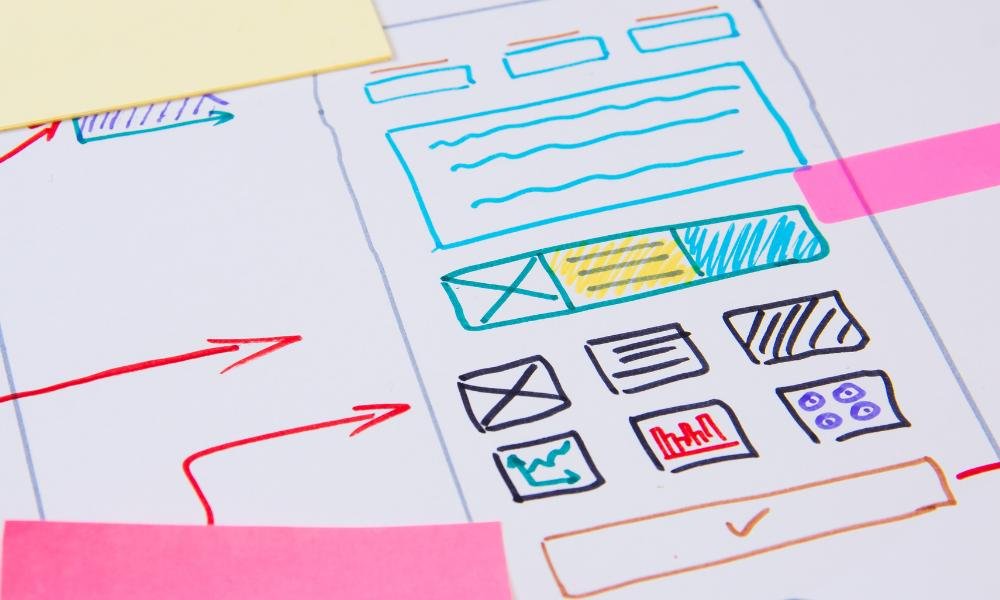A seamless, engaging digital experience isn’t just about looking good—it’s about keeping visitors hooked, guiding them effortlessly, and making sure they come back for more. The right professional can make that happen. The wrong one? Well, let’s just say frustrated users won’t be your only problem.
With so many options, finding the perfect match can feel like searching for a needle in a haystack. But don’t worry—I’ve mapped out everything you need to know.
What You’ll Learn
Why hiring an experienced UX/UI specialist is a game-changer.
The must-have skills and qualities to look for.
Where to find the best talent.
How to evaluate portfolios and conduct interviews.
Red flags that signal a bad fit.
Let’s dive in.
Why a Skilled UX/UI Professional Matters

Ever visited a website that confused you? Or used an app that felt frustrating? Bad interfaces don’t just annoy people—they drive them away.
Here’s why hiring the right expert can transform your digital presence:
Stronger Engagement – A well-crafted experience keeps visitors interested.
Higher Conversions – A clear and intuitive layout encourages action.
Trust & Credibility – A polished look makes your brand more professional.
Long-Term Savings – A thoughtful approach now prevents expensive fixes later.
If you’re still unsure how much impact this has, this article dives deeper into why good interface work is critical for success.
What to Look for in a UX/UI Specialist
Not all professionals work the same way. Some excel in mobile applications, while others shine in e-commerce or software platforms. Here’s what I prioritize:
1. A Portfolio That Goes Beyond Visual Appeal
A strong portfolio isn’t just about attractive layouts. It should highlight:
Versatile Experience – Can they adapt to different industries and platforms?
Problem-Solving Skills – Do they explain the logic behind their choices?
Usability Focus – Does their work improve the experience, not just the look?
The best candidates also showcase sketches and prototypes, not just final versions. If you’re curious about how prototypes differ from wireframes, this guide breaks it down.
2. A User-First Approach
A great professional considers how real people interact with technology. I look for:
A strong process for researching audience needs.
A commitment to accessibility and inclusive design.
The ability to justify decisions with data and testing rather than personal preference.
3. The Right Tools & Technical Know-How
A solid UX/UI specialist should be fluent in industry-standard tools such as:
Figma – A popular tool for collaboration.
Adobe XD & Sketch – Common for designing interactive layouts.
InVision – Great for creating prototypes.
Bonus points if they understand basic coding (HTML & CSS), as it helps when working with developers.
4. Strong Communication & Collaboration
UX/UI work isn’t done in isolation. It involves working closely with developers, marketing teams, and decision-makers. A great candidate should:
Explain their choices clearly to both tech and non-tech teams.
Take feedback constructively and make revisions as needed.
Stay focused on business goals while prioritizing the end experience.
Where to Find the Right UX/UI Talent
Now that you know what to look for, the next challenge is finding the right person. Here are my top sources:
Freelance Platforms
Upwork – A mix of beginner and expert-level professionals.
Toptal – A more selective platform featuring top-tier candidates.
Dribbble & Behance – Best for browsing portfolios and finding creative talent.
Networking & Referrals
LinkedIn – Searching by industry or checking referrals often leads to strong candidates.
Professional connections – A recommendation from a trusted source is always a plus.
Agencies vs. Independent Specialists
For large-scale projects, an agency might be the way to go. They offer:
A team-based approach with multiple specialists.
Faster turnaround times due to dedicated resources.
Project management support to keep everything on track.
That said, independent professionals tend to be more flexible and cost-effective for smaller projects.
How to Evaluate a UX/UI Professional Before Hiring

A great-looking resume isn’t enough. I always take extra steps to make sure I’m making the right choice.
Step 1: Review Their Work
Ask yourself:
Have they handled projects similar to yours?
Does their past work reflect clarity and usability?
Can they explain the why behind their design decisions?
Step 2: Ask the Right Questions
An interview isn’t just about skills—it’s about mindset. Here are a few key questions:
How do you approach new projects?
What research methods do you use?
Tell me about a time you solved a major usability issue.
How do you handle feedback and revisions?
These reveal their problem-solving abilities and adaptability.
Step 3: Assign a Small Test Project
I don’t believe in free work, but a paid trial task helps evaluate their skills. A simple redesign or usability challenge can show:
Their thought process and how they solve problems.
Their ability to communicate and present solutions.
How they work within real-world constraints.
If they struggle here, they’ll likely struggle with a full project.
Red Flags to Watch Out For
No hands-on experience – If their work is mostly concept pieces, proceed with caution.
Can’t explain their choices – If they rely on aesthetics without purpose, that’s a warning sign.
Poor responsiveness – Slow or vague communication often leads to project delays.
No focus on usability – If they prioritize visuals over functionality, that’s a deal-breaker.
The Bottom Line
Finding the right UX/UI specialist isn’t just about hiring talent—it’s about finding someone who understands business needs and audience expectations.
Here’s a quick recap:
Look for a well-rounded portfolio with clear problem-solving examples.
Prioritize a user-first mindset that values accessibility and research.
Check for strong technical and communication skills.
Use freelance platforms, referrals, and agencies to find top talent.
Test their abilities before committing long-term.
If you’re rethinking your current interface, these insights might help:


